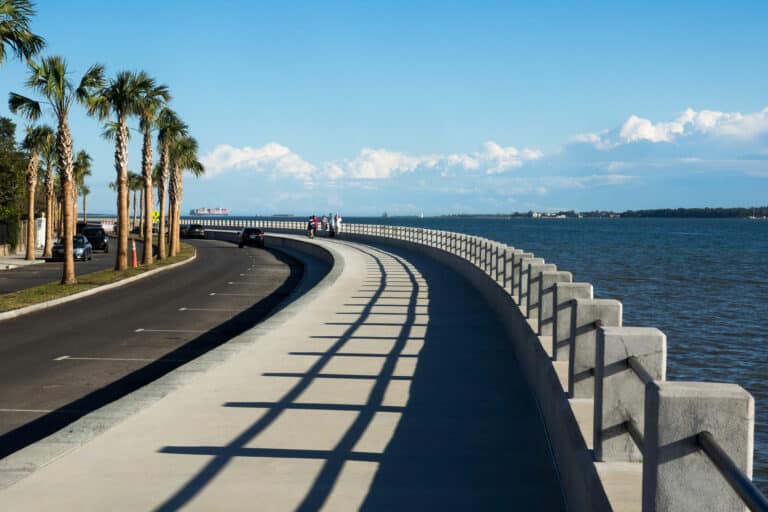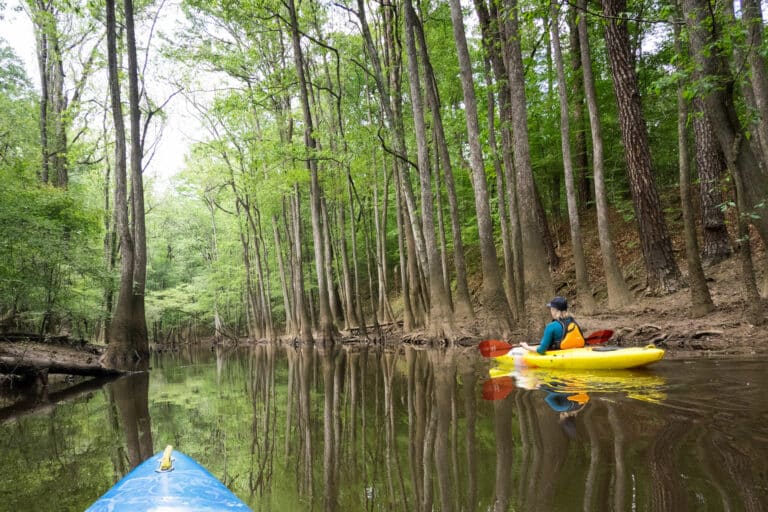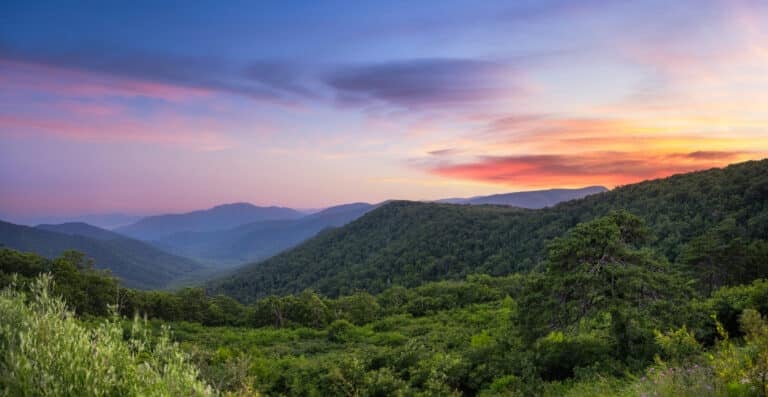Solutions that could actually save the planet
BRO asked Pulitzer-Prize-winning authors, CEOs, and leading environmental experts: what is the single most important change needed to protect the planet and its people? Here are their 12 insightful, innovative, and inspiring responses.
 1. educate women worldwide
1. educate women worldwide
The most effective contraceptive is education for girls. When women are educated, they tend to marry later in life, have children later in life, and have fewer children. In effect, you have a form of population control that’s peaceful, voluntary, and efficient. Plus, educated women do better in business, raising economic growth rates and lowering societal conflict. Empowering women through education provides the highest return on investment in developing countries. It is the single most cost-effective way to empower and modernize communities. Of course, it’s also important to educate boys, but there are a couple of reasons why girls’ education brings an even higher return. First, it reduces birth rates very considerably, which brings the country a demographic dividend. Second, women are more likely than men to use extra income to educate their own children and to start small businesses.
—Sheryl WuDunn, Pulitzer-Prize winning co-author of Half the Sky: Turning Oppression Into Opportunity for Women Worldwide
 2. safe drinking water
2. safe drinking water
Imagine if, instead of just going to a tap in your kitchen any time you were thirsty, you had to hoist a heavy vessel onto your head and walk, up to two hours, to a well, where, after filling your vessel—now really heavy—you had to carry it up to two more hours back home. The water you carry would often be dirty and diseased. After your trek, how much more time and energy would you hope to have to farm, cook, take care of your family, especially the sick ones, or go to school? This is the dilemma facing over one billion women and children worldwide each day. A child dies every 15 seconds because of water-related diseases.
Fortunately, we already have the solutions to the world’s water crisis, and they are surprisingly simple: low-tech wells and small-scale water projects that are completely sustainable and maintainable by the communities they support. Hand-washing and basic hygiene education are also essential to prevent disease and contamination.
In the United States and other developed nations, water conservation is crucial. Improving water infrastructures and protecting watersheds are important governmental actions, but the Blue Revolution begins with each individual taking steps to reduce his or her own water footprint.
—Lisa Nash, CEO of the Blue Planet Network
3. no-growth economy
The rapid economic growth of the past two centuries has been felt very unevenly around the globe. Many have prospered while many others remain desperately poor. Economic growth has depended on a massive increase in the use of materials and energy, and on the spread of humans into virtually every corner of the planet, accelerating the extinction of other species. And yet the human population is forecast to grow by another 3 billion or so in the next 50 years.
It is most unlikely that the planet will be able to accommodate so many of us and raise the material living standards of those in greatest need, without changing the priority we give to economic growth. Having overshot the capacity of the planet to support us, starting in the rich countries we should reduce the demands we make on the planet to cater to our profligate way of life and forgo the pursuit of endless economic growth.
An economy that doesn’t grow in material terms—a steady-state economy—can be healthy and even desirable, as economists as great as John Stuart Mill and John Maynard Keynes acknowledged. But it will require fundamental changes: we will work less so that more people stay employed with a reasonable salary, and consume less, scaling back to something like levels in the 1960s, so that citizens in developing countries can prosper. A world with fewer inequalities between rich and poor would be more secure and would also help stabilize world population levels. And with more time to spend with family, friends and in our communities, we might well live truly richer and more fulfilling lives.
—Peter Victor, professor of economics at York University and author of Managing Without Growth: Slower By Design, Not Disaster
 4. think globally, eat locally
4. think globally, eat locally
We need a transparent and locally based food system, where people understand exactly how food gets to their table and what the hidden costs of cheap food really are. In order to get that cheap tomato out of season, it takes a vulnerable labor force, big factory farms, and giant waste lagoons. Cheap food is also responsible for our obesity epidemic. There’s also an environmental cost to shipping food around the world. From the perspectives of economy, ecology, health and taste, the actual value of a locally grown tomato far surpasses the actual cost of a tomato grown by a factory farm. Once locally grown food becomes mainstream again, we’ll see a healthier population and a healthier environment. And the systems we have in place can handle this change. Grocery stores can be supplied by local farmers just as easily as corporate farms. Even large distributors are willing to accommodate local farms. They just need to see the desire in the marketplace.
—Charlie Jackson, executive director of the Appalachian Sustainable Agriculture Project
5. corporate revolution
Benefit Corporations—called B-Corporations (or B-Corp)—is a certification to distinguish truly sustainable businesses from the pretenders and greenwashers. Instead of simply measuring economic performance, B-Corporations have also committed to meeting social and environmental performance measurements. The IRS audits the economic portion, while the nonprofit B-Lab audits and rates the added performance measurements of all B-Corps.
Maryland and Vermont became the first two states to enact B-Corporation law earlier this year, and already there are over 125 B-Corps in 31 industries comprising $1 billion of the market. It is the best way to definitively evaluate and separate the pretenders from those businesses that really practice what they preach. Best of all, consumers can know with certainty that the businesses they support have met certain social and environmental standards.
How you measure a successful business is changing in the twenty-first century: from “me” to “we.”
—Andrew Kassoy, co-founder of B-Lab, the certification organization for B-Corporations
 6. cash for pollution
6. cash for pollution
You have to show Americans the true price of pollution. That is best accomplished by levying a tax on fuels when they’re taken out of the ground or brought into our country. The companies will pass most of that cost on to the consumer, which will make turning your lights on and driving your car cost more. So give the $500 billion in tax revenues back to the American people as a “green check” each year, divided up equally, exactly like they do in Alaska with oil revenues. This gives citizens a chance to recoup the extra costs that are passed down because of the carbon tax.
The cap and trade system has to die before the carbon tax will live. The problem with cap and trade—where companies buy and sell a finite amount of pollution credits—is that once you have trading, you have Goldman Sachs—the smartest people in the room figuring out ways to game the markets and make a profit. The clearest, fairest, most transparent way to address the issue is with a straightforward tax.
There’s a dirty little secret with energy. Occasionally, Americans see the truth when accidents like this oil spill or the coal ash spill occur, but mostly, it’s a matter of out of sight, out of mind. We don’t see the true cost of this energy to our health, our environment, and our everyday lives.
—Charles Komanoff, co-founder of the Carbon Tax Center
7. free condoms
Our planet is simply overwhelmed by too many people. We’re doing all this work to clean up the streams, protect a habitat here and there, or reduce our carbon footprint, but it’s not going to do any good if our population continues to grow out of control.
Here in the U.S., which has the fastest population growth of any developed nation in the world—the impact of our population growth is compounded because an American child’s carbon legacy is 168 times more than a child born in a developing country like Bangladesh.
The way to stabilize population—both in the U.S. and overseas—is to make birth control universally accessible. Here in the U.S., birth control is not covered by many women’s health care programs, and worldwide, millions of women don’t have access to any health care. So we’re distributing free condoms, with endangered species depicted on them to help people make the connection between population and the planet’s health. We’ve already distributed 350,000 free condoms in the first five months of 2010.
We must look at birth control not as a moral or religious issue, but as a simple biological question: how many people can this planet sustain?
—Randy Serraglio, overpopulation project coordinator for the Center for Biological Diversity
8. drive less
On average, Americans spend 18.5 hours per week in our car, and over $7,000 a year in gas, maintenance, and taxes. Americans essentially need a part-time job to pay for their cars.
The solutions are attainable: first, try to drive 1,000 miles less per year (Americans average 22,000 miles per year). Next, keep a car diary detailing the number of trips you take in your car and how much time you spend in your car. Also compute the household car costs in this diary. Write down every tank of gas you buy, every set of tires you buy. Once you start writing these trips and costs down, you’ll begin to see that owning a car is a trade-off. If you’re spending $7,000 or more on your car every year, that’s a lot of vacations or college tuition payments you could be contributing to. Having a positive impact on climate change is a good reason to drive less, but it goes beyond that. Car-related accidents are the main cause of death for people ages 3 to 44. It’s a public health issue as much as it is an environmental issue.
—Catherine Lutz, anthropologist, professor at Brown University, and co-author of Carjacked: The Culture of the Automobile and its Effect on Our Lives
 9. play outside for one hour a day
9. play outside for one hour a day
We’re seeing a generation-long disconnect between kids and nature. This disconnect has led to skyrocketing rates of obesity, media addiction, and attention deficit disorder. And there are volumes of research showing that time outside is good for a kid’s mind, body, and spirit. Set aside a green hour every day where your kids—and you—can explore the outdoors. Even 10 or 15 minutes of outdoor play is worthwhile. The important thing is for you and your family to immerse yourselves in nature, to rebuild that connection that we’re losing. The amount of time kids spend exploring the natural world today will inform how they will see the natural world as adults. Before we ask kids to save the world, let them first come to know it and love it.
—Todd Christopher, author of The Green Hour: A Daily Dose of Nature for Happier, Healthier, Smarter Kids
10. put a price on a priceless forest
Forests are the world’s main reservoirs for carbon. Old growth forest is the optimum for the sequestration of carbon. The older the forest gets, the more carbon it banks. The Smokies sequester a lot of carbon, and there’s a lot of forest left on public and private land that’s still in good shape. So how do you convince America to protect it? We need to establish a system that actually details the monetary value of these intact forests from a carbon sequestering, watershed protection, and public health standpoint. Paying to protect forests is cheaper than shooting carbon into space, safer than shooting into the earth’s core, and it’s the solution that’s readily available.
If we can develop a carbon trading system that puts a price tag on the carbon sequestration, watershed protection, and public health values of a forest, we can then use a percentage of those trades to fund the acquisition of more conservation easements and forest protections.
—Hugh Irwin, conservation planner for the Southern Appalachian Forest Coalition
11. meatless mondays
The United States is the world’s most obese country, and the world’s largest producer of greenhouse gases. How do you kill two birds with one stone? Eat better meat, and less of it. Our entire food system needs to be overhauled, and it’s not going to happen overnight. But what is realistic, what everyone can do, is reduce the amount of meat they eat, which will substantially reduce the amount of livestock waste that ends up in our water sources, the amount of fresh water we use for those animals, the amount of grain we use to feed those animals, the amount of antibiotics injected into our food system, and the amount of greenhouse gases we produce.
Meat is a great resource for protein, and in moderation, it’s fine. We just eat too much of it. A realistic and attainable goal we’ve created is Healthy Mondays, where people eliminate—or reduce—meat consumption one day a week. The impacts it will have on your own health and the health of your environment are substantial.
—Ralph Loglisci, project director for the Johns Hopkins Healthy Mondays Project, an initiative to get schools, hospitals, and institutions to make better choices one day a week
 12. energizing the fight against poverty
12. energizing the fight against poverty
Environmental degradation is intrinsically bound to poverty, and each aggravates and perpetuates the other. Addressing the root causes of poverty—particularly the causes and consequences of climate change—begins at home by reducing our dependence on coal and improving energy efficiency. Worldwide, it means moving toward renewable energy sources and helping poor communities hit hardest by climate change, which is driving hundreds of millions off their drought-stricken lands. These environmental refugees make their way to sprawling cities to find work mostly in unsustainable extraction of natural resources for insatiable Western consumption. Even here in the Southeastern U.S., our lifestyles are powered largely by coal, which devastates the natural and human communities of our brothers and sisters in Appalachia.
People of color and the poor pay disproportionately for their energy-related costs, sometimes as high as 70 percent of their annual income. Investing in weatherization and other energy efficiency measures in the Southeast would dramatically reduce our dependence on coal, reduce global warming emissions, and reduce energy costs by an average of 33 percent for the poorest and most vulnerable in our communities. On a global scale, providing climate adaptation programs—like rainwater harvesting and reforestation—for impoverished subsistence farming communities is one of the United Nations’ Millennium Development Goals (MDGs) for the ambitious goal of ending poverty by 2015. Energy efficiency, renewables, and climate adaptation are not silver bullets, but they are integral to healing and protecting natural communities for all.
—Jill Rios, executive director of North Carolina Interfaith Power and Light, a nonprofit working with faith communities to address climate change. •







